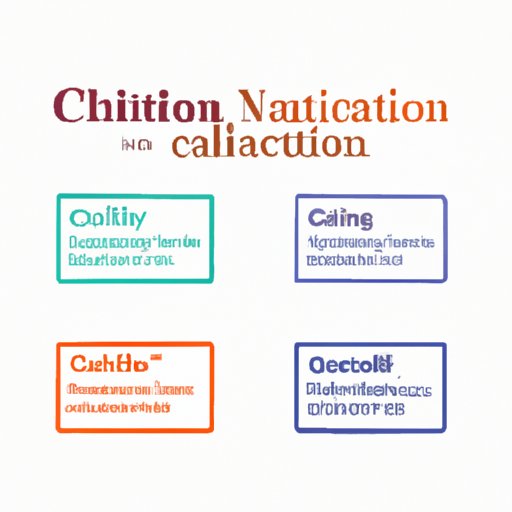
I. Introduction
Citation is an essential part of academic writing that helps authors avoid plagiarism and gives credit to the original source of information. Accuracy in citation is crucial in maintaining academic integrity and ensures that the information provided is reliable and credible.
In this article, we will provide you with a step-by-step guide on how to cite a source, the importance of accurate citation and the different citation styles available. We will also explore common citation problems with solutions and modern citation tools that can make the citing process much easier.
II. Step-by-Step Guide
Citation is the process of acknowledging the source of information used in academic writing. It is an essential component of academic work, and it ensures that authors give credit to the original authors of the information used in their work. The citation process can be broken down into the following steps:
- Identify the source of information used in your work
- Choose the appropriate citation style depending on the subject and assignment requirements
- Follow the formatting guidelines for your chosen citation style
- Include the citation after the relevant information in your writing
For example:
Step 1: Identify the source of information
Smith, J. (2019). Global Warming and Its Effects on the Environment. New York: Oxford University Press.
Step 2: Choose the appropriate citation style
The citation style chosen will determine how information is presented in your work. Common citation styles include APA, MLA, Chicago, and Harvard.
Step 3: Follow the formatting guidelines
Each citation style has specific formatting guidelines that need to be followed. For example, APA style requires the author’s name, year of publication, title of article or book, and publisher information for a book citation.
Step 4: Include the citation
When using information from a source in your writing, it is essential to include a citation immediately after the information in the required format.
III. Importance of Citation
Citation helps authors avoid plagiarism and gives credit to the original source of information used in their work. It also allows readers to access the original source of information and verify its accuracy. Citing sources is essential for academic writing, and it has several benefits that include:
- Establishing credibility for the author by demonstrating thorough and responsible research
- Helping readers find the original source of information cited which can, in turn, enhance readers’ confidence in your work
- Contribute to building the knowledge and advancing research in the field.
Citing sources also helps authors avoid being accused of plagiarism, which could have adverse effects on their academic careers. Therefore, accurate citation is essential for academic integrity and ensures that authors are taking responsibility for their research and the sources they use while building a more robust and sustainable academic community.
IV. Different Citation Styles
The most common citation styles include APA (American Psychological Association), MLA (Modern Language Association), Chicago, and Harvard. Each style has its unique guidelines governing how sources should be cited, including formatting, in-text citations, and bibliography entries. The main differences between citation styles include:
- The order in which source information appears in the citation
- The particular punctuation styles used in citations and bibliographies
- The writing style used in the citation
When deciding on a citation style, you must consider both your subject and any specific requirements provided by your instructor. Some subjects may require you to use a specific citation style, and it is essential to know these requirements beforehand. You can also consult your instructor or the writing center for guidance on which citation style to use for your specific assignment.
V. Troubleshooting
Citation can be a challenging and time-consuming process, and it is vital to be aware of common citation problems. Here are some solutions to common citation problems:
- Citing sources with multiple authors: Use the surname of the first author, followed by et al., which means ‘and others.’ For example, Smith et al. (2021).
- Citing sources with no date listed: Use n.d. (no date) in place of the year in your citation.
VI. Modern Citation Tools
Advances in technology have revolutionized the citation process, and there are now many tools available to assist with citing sources. These tools can automatically generate citations in various styles, including APA, MLA, and Chicago. Some popular citation tools include:
- Zotero
- EasyBib
- EndNote
These tools have several benefits, including the ability to save citations for future use, generate and format bibliographies and cite sources within word processing software.
VII. Conclusion
Citation is an essential part of academic writing, and accurate citation is crucial for maintaining academic integrity. This article has provided you with a step-by-step guide on how to cite a source, the importance of citation in academic work, different citation styles, troubleshooting tips, and modern citation tools. Remember to consult your instructor or academic guidelines when in doubt, and always prioritize the accuracy of your citation.




